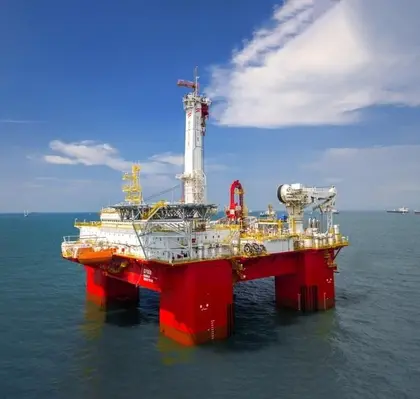
Cooper Energy have, in their most recent quarterly report, confirmed more details for the abandonment work they have organised with Helix Energy Solutions in Australia with the announcement that they have acquired the Q7000 light well intervention rig to decommission the infrastructure in the Basker, Manta and Gummy (BMG) fields.
Earlier this year, David Carr, Senior VP of International Business at Helix Energy Solutions was joined by a host of panellists for the OWI webinar on decommissioning in Australia, where discussions focused on the substandard state of decommissioning in the region. In the session, Carr said that Cooper Energy had selected the Q7000 to perform operations for them in Australia in 2022, a move which they hoped would be the catalyst for getting on top of the decommissioning project in the country.
Cooper Energy have now confirmed this work in more detail with the announcement that the Q7000 will enter Australia waters with the first task of carrying out the decommissioning of the BMG fields, located in the Gippsland Basin. This will involve the decommissioning of seven wells and associated subsea infrastructure (pipelines and control umbilicals).
The Helix Q7000 Safety Case, a key permissioning document, has been submitted to the regulator (NOPSEMA) and is currently under review. The plan is that other regulatory documentation, including the Environment Plan and Well Operation Management Plan, will be submitted in Q4 FY21.
The BMG abandonment project is currently in the Front End Engineering Design (FEED) stage, with activities focused on selecting optimal methodologies and technologies for safe and cost-effective delivery of the decommissioning objectives. Details of scope of works, timing of execution and cost estimates will be announced at the final investment decision (FID), which is being considered in FY22.
The Q7000
The Helix Q7000 light well intervention rig has been specifically designed and built for intervention on subsea wells and abandonment activities. It is one of the newest vessels of its type, and benefits from the latest technological advances in well intervention, bolstered by its participation in the Subsea Services Alliance and array of equipment provided by Schlumberger. Its features include:
-IMO-certified Class 3 Dynamic positioning System
-Intervention Riser System, IRS 6, designed by Helix which enables access to both vertical and horizontal subsea trees in depths from c.85m to c.3000m
-Variable load capacity of c.3,000t
-ITF (Integrated Tension Frame), IRS maintenance tower, allowing for walk-to-work and safe access to well control equipment
-Large flush deck with skidding system for well intervention support equipment and tubular storage. Increasing operability by reducing reliance on offshore cranes
-Below deck twin work class ROV systems with harsh weather deployment capability
-Bulk fluids storage and pumping systems
-Wireline, Slickline, coiled tubing and cementing pumping spreads (Schlumberger).




